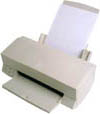The Conjunctive Adverb
Recognize a conjunctive adverb when you find one.
Conjunctions have one job, to connect. They join words, phrases, or clauses together to clarify what the writer is saying. Their presence provides smooth transitions from one idea to another.
When the job of an adverb is to connect ideas, we call it a conjunctive adverb.
Here is the list:
Conjunctive Adverbs accordingly
also
besides
consequently
conversely
finally
furthermore
hencehowever
indeed
instead
likewise
meanwhile
moreover
nevertheless
nextnonetheless
otherwise
similarly
still
subsequently
then
therefore
thusA conjunctive adverb can join two main clauses. In this situation, the conjunctive adverb behaves like a coordinating conjunction, connecting two complete ideas. Notice, however, that you need a semicolon, not a comma, to connect the two clauses:
Main Clause + ; + Conjunctive Adverb + , + Main Clause.
Read these examples:
The dark skies and distant thunder dissuaded Clarice from her afternoon run; moreover, she had thirty calculus problems to solve for her morning class.
Leon's apartment complex does not allow dogs over thirty pounds; otherwise, he would have bought the gangly Great Dane puppy playing in the pet store window.
The cat ate a bowlful of tuna; then, to the squirrels' delight, the fat feline fell asleep in the rocking chair.
A conjunctive adverb will also introduce, interrupt, or conclude a single main clause. In this situation, you will often need commas to separate the conjunctive adverb from the rest of the sentence.
Here are examples:
At 10 a.m., Paul was supposed to be taking his biology midterm. Instead, he was flirting with the pretty waitress at the coffee house.
Maria declined Jeff's third invitation to go out. This young man is determined, nevertheless, to take her to dinner one night soon.
After mowing the yard in the hot sun, Pedro was too hungry to shower. He did wash his dusty hands, however.
If the break is weak, do not use comma(s).
Anna called to say her car would not start. Rafael will therefore have to walk to school.
Weak interruption = no commas.
The long noodles splashed tomato sauce all over the front of Brenda's shirt. Ordering fettuccine was a mistake indeed.
Weak interruption = no comma.
©1997 - 2025 by Robin
L. Simmons
All Rights Reserved.
